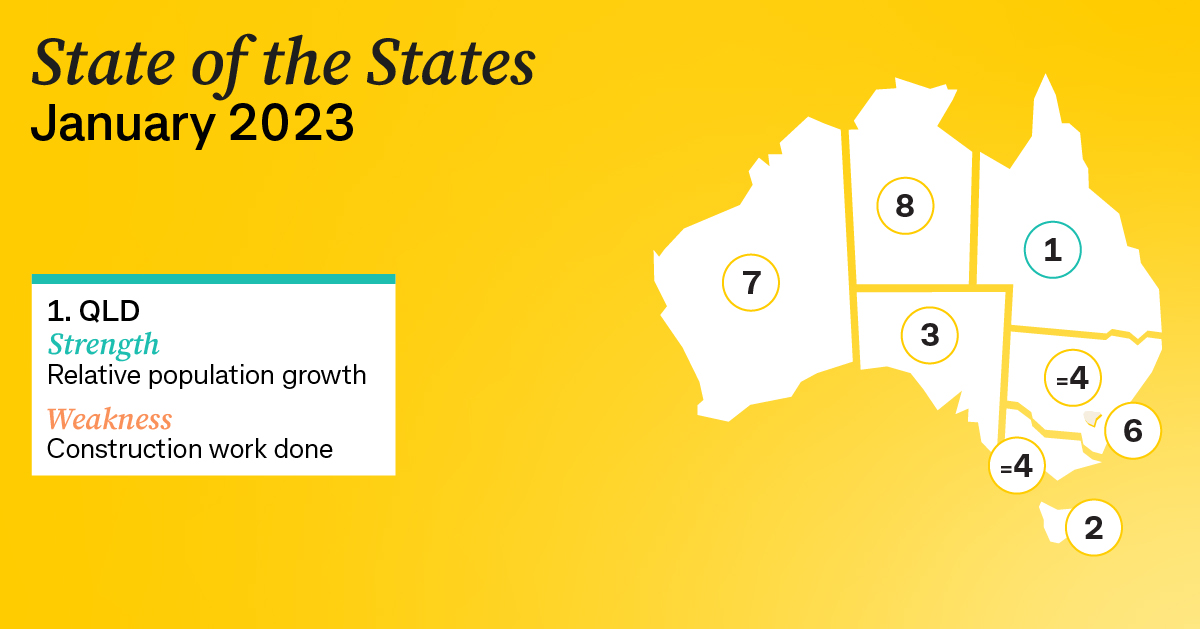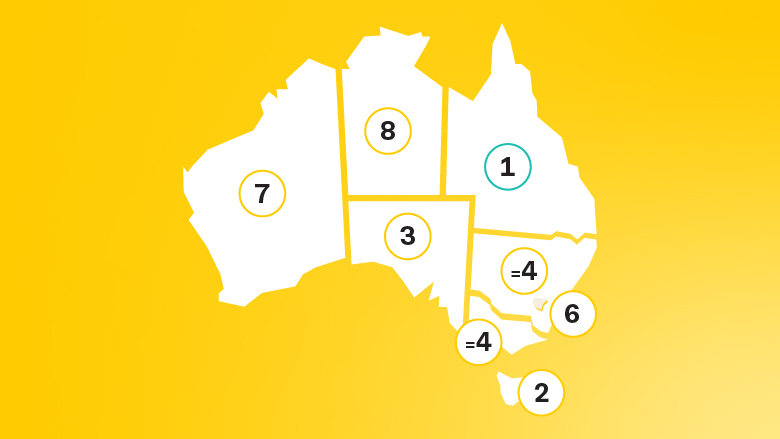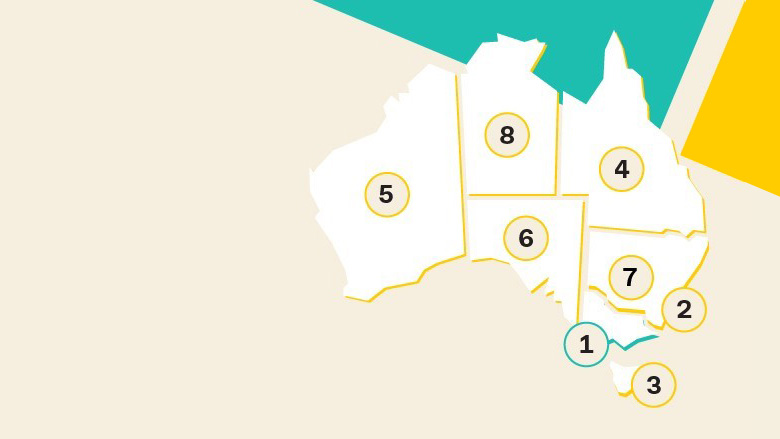For the first time in the 13-year history CommSec’s State of the States report, Queensland has come out on top of the quarterly surveys – a ranking of economic performance.
Queensland’s economic activity has seen benefits from strong relative and absolute population growth, a solid job market and buoyant overseas demand for energy resources, such as coal and natural gas.
Across all the indicators, Queensland is now ahead of Tasmania which drops from first to second. South Australia has lifted from fifth to third. NSW is now in joint fourth spot with Victoria, ahead of the ACT, Western Australia and the Northern Territory.
The CommSec State of the States report uses the latest available information to provide an economic snapshot of each region by comparing annual growth rates for eight key indicators including: economic growth; retail spending; equipment investment; unemployment, construction work done; population growth; housing finance and dwelling commencements.
Speaking about the report, CommSec Chief Economist Craig James commented on Queensland’s ascension to the top position on the economic rankings.
“The diversification of its economy has traditionally prevented Queensland from taking top spot in the economic rankings. That is, strength in some sections of the economy had been offset by weaknesses in others. But Queensland is currently supported by solid mining, energy and tourism sectors as well as solid internal migration,” Mr James said.
“Queensland has a strong report card, ranking first on relative population growth and relative unemployment, and is second ranked on three of the other eight economic indicators.
“When looking at annual growth rates to get a guide on economic momentum, Queensland had annual rates that exceeded the national average on five of the eight indicators.
“In terms of future economic performance for all state and territory economies, much will depend on the performance of housing and job markets at a time of higher interest rates.”
 State of the States January 2023 snapshot — Queensland
State of the States January 2023 snapshot — Queensland
 State of the States January 2023 snapshot — all states
State of the States January 2023 snapshot — all states
State and territory highlights
- NSW ranked third on equipment investment and relative unemployment.
- Victoria ranked first on retail spending.
- Queensland ranked first on relative population growth and relative unemployment.
- South Australia ranked first on construction work and dwelling starts.
- Western Australia ranked first on relative economic growth.
- Tasmania ranked first on equipment investment.
- The ACT ranked first on housing finance.
- The Northern Territory ranked third on relative economic growth.
Annual growth rates
- Annual changes in economic indicators are useful for measuring economic momentum.
- Of the eight indicators assessed, the ACT, the Northern Territory and Queensland led on two of the eight economic indicators. And Tasmania and NSW each led on one indicator.
- Notably, when looking across annual growth rates, NSW, the ACT and Queensland had annual growth rates that exceeded the national average on five of the eight indicators.
- Next best was the Northern Territory, exceeding the national annual growth rate on four of the eight indicators.
- Tasmania and South Australia led the national average on three indicators. Western Australia exceeded the national average growth rate on two indictors followed by Victoria on one indicator.
Note to editors: interviews with Craig James can be requested via the CBA Media team on (02) 9118 6919 or media@cba.com.au.
About the CommSec State of the States Report
The State of the States report uses the most recent economic data available, however while some data relates to the June quarter, other data – such as unemployment – is timelier, covering the month of September.
CommSec, the digital broking arm of Australia’s largest bank, assesses the performance of each state and territory on a quarterly basis using eight key indicators. Those indicators include: economic growth, retail spending, equipment investment, unemployment, construction work done, population growth, housing finance, and dwelling commencements.
Just as the Reserve Bank uses long-term averages to determine the level of "normal" interest rates, CommSec compares the key indicators to decade averages; that is, against "normal" performance. CommSec also compares annual growth rates for eight key indicators for all states and territories, in addition to Australia as a whole, enabling a comparison of economic momentum.
Go to CBA Newsroom for the latest news and announcements from Commonwealth Bank.



